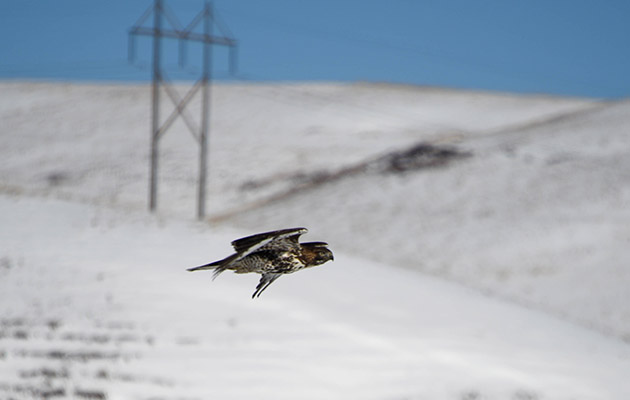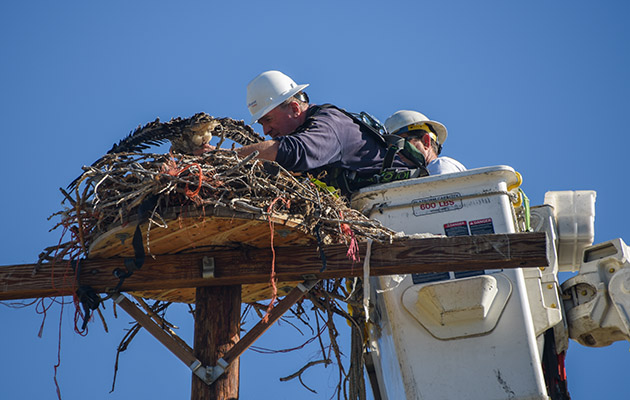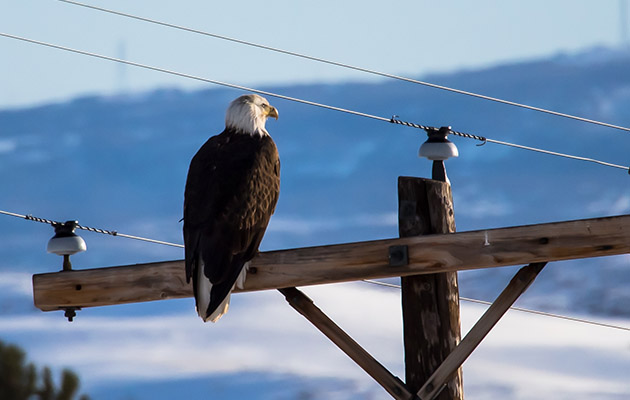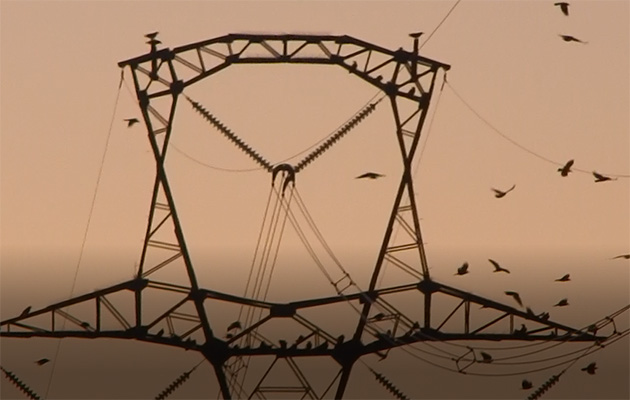For the Birds
Avian Conservation
NorthWestern Energy’s Avian Protection Plan (APP)
Watching an osprey dive into the water, sometimes submerging completely before rising from the surface with a struggling fish, leaves a lasting impression. Ospreys are once again a common sight across most of Montana as their populations rebound from the negative effects of DDT, a widely used pesticide that was banned in the 1970s. However, with this wildlife management success story comes some conflict: Ospreys are relatively tolerant of human activity and frequently build nests on power poles. Nests can cause power outages and even fires, and their proximity to energized equipment puts the birds at risk of electrocution. NorthWestern Energy has installed hundreds of platforms to maintain service reliability and to provide a safe place for ospreys to raise their offspring.
NorthWestern Energy’s Avian Protection Plan (APP) incorporates industry best practices developed by the Avian Power Line Interaction Committee, which is a collaboration among the Edison Electric Institute, the U.S. Fish and Wildlife Service and member utilities. The primary goal of an APP is to reduce bird injuries and mortalities from power line collisions and electrocutions. If one species epitomizes the potential for conflict between our electric system and birds it is the osprey.
Check out the Live Osprey Cam
Exploring Our Avian Protection Plan
Our APP reflects a commitment to environmental stewardship, and fulfilling its provisions to safeguard ospreys is just one example of responsible risk management. Osprey-power line interactions can be complicated, and solving conflicts by practical necessity must involve engineers, linemen and biologists. Implementing our APP includes designing avian-friendly power poles, training line crews, providing information on federal regulations protecting migratory birds and increasing public awareness. In fact, we cooperate with osprey research projects throughout the state and these partnerships have yielded mutually beneficial results. We learn quickly of new osprey nests discovered by citizen scientists participating on these projects, which gives us the opportunity to erect nest platforms in a timely manner. The researchers, in turn, receive donated support to access nestlings for banding.
Soaring Osprey Population
Avian-safe power poles

Avian-safe power poles
Meet our bird biologist

Meet our bird biologist
Partnering to protect eagles

Partnering to protect eagles
Solving an Outage Mystery

Solving an Outage Mystery
The leading cause of power outages on NorthWestern Energy’s largest transmission line probably isn’t what you’d expect. It’s not wind, or storms, or trees falling on the line. The leading cause of outages is birds, or more specifically, bird poop.
Learn about the innovative ways we're working to prevent those outages.
How You Can Help
Secure baling twine to protect ospreys
- Baling twine is often found in osprey nests, but it can be deadly to hatchlings and adults who become entangled in it.
- It’s unclear why ospreys are so attracted to baling twine, but the best way to prevent it from ending up in nests is to pick up all baling twine and store it in buildings or containers with secure lids
Report osprey nests built on power lines
However, this time of year when ospreys return to Montana, we often see the birds building nests on power lines. This can cause power outages and even fires, and the nests’ proximity to energized equipment puts the birds at risk of electrocution.
If you see an osprey nest on a power pole, please report it by calling us at 888-467-2669 or filling out the online form HERE.




